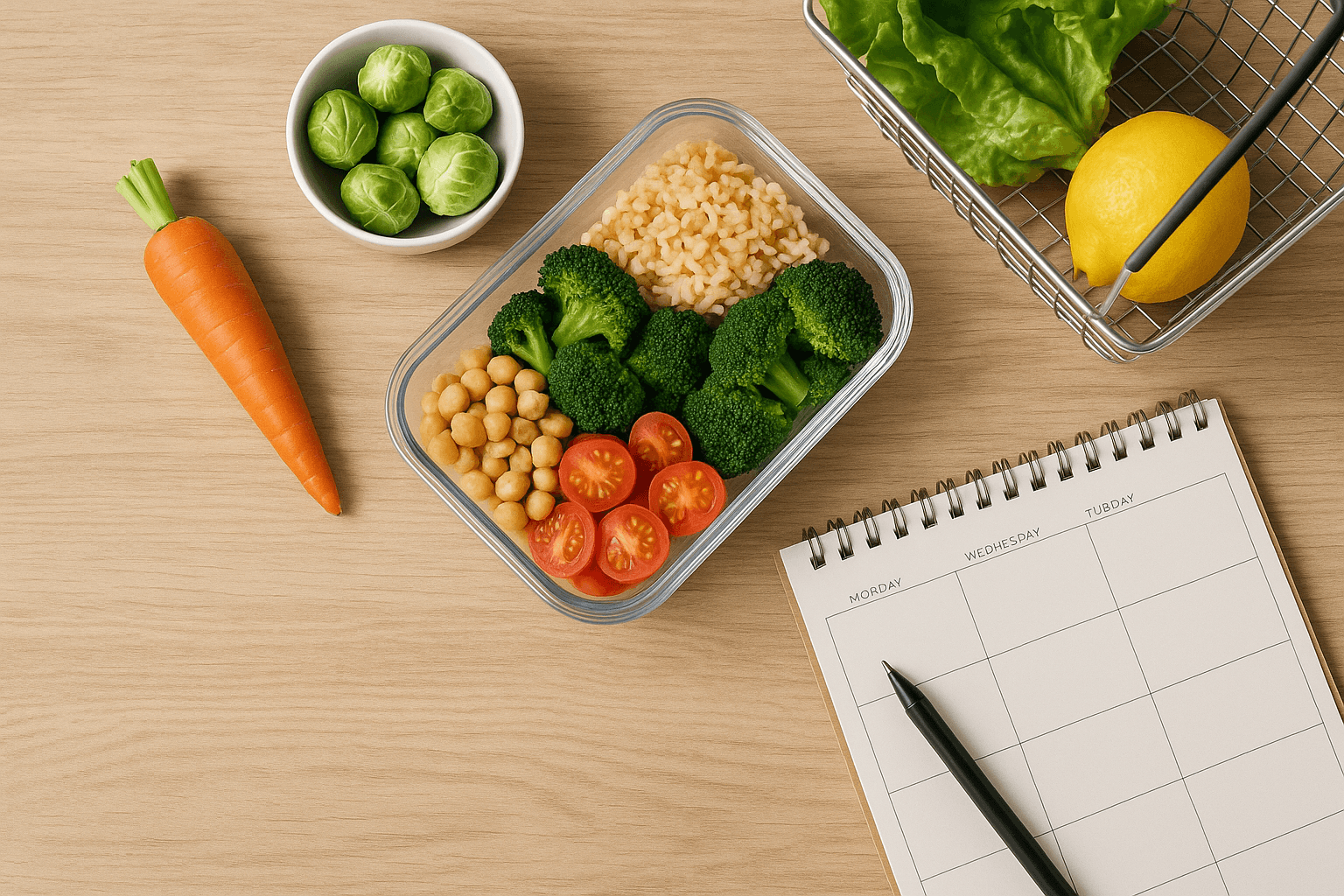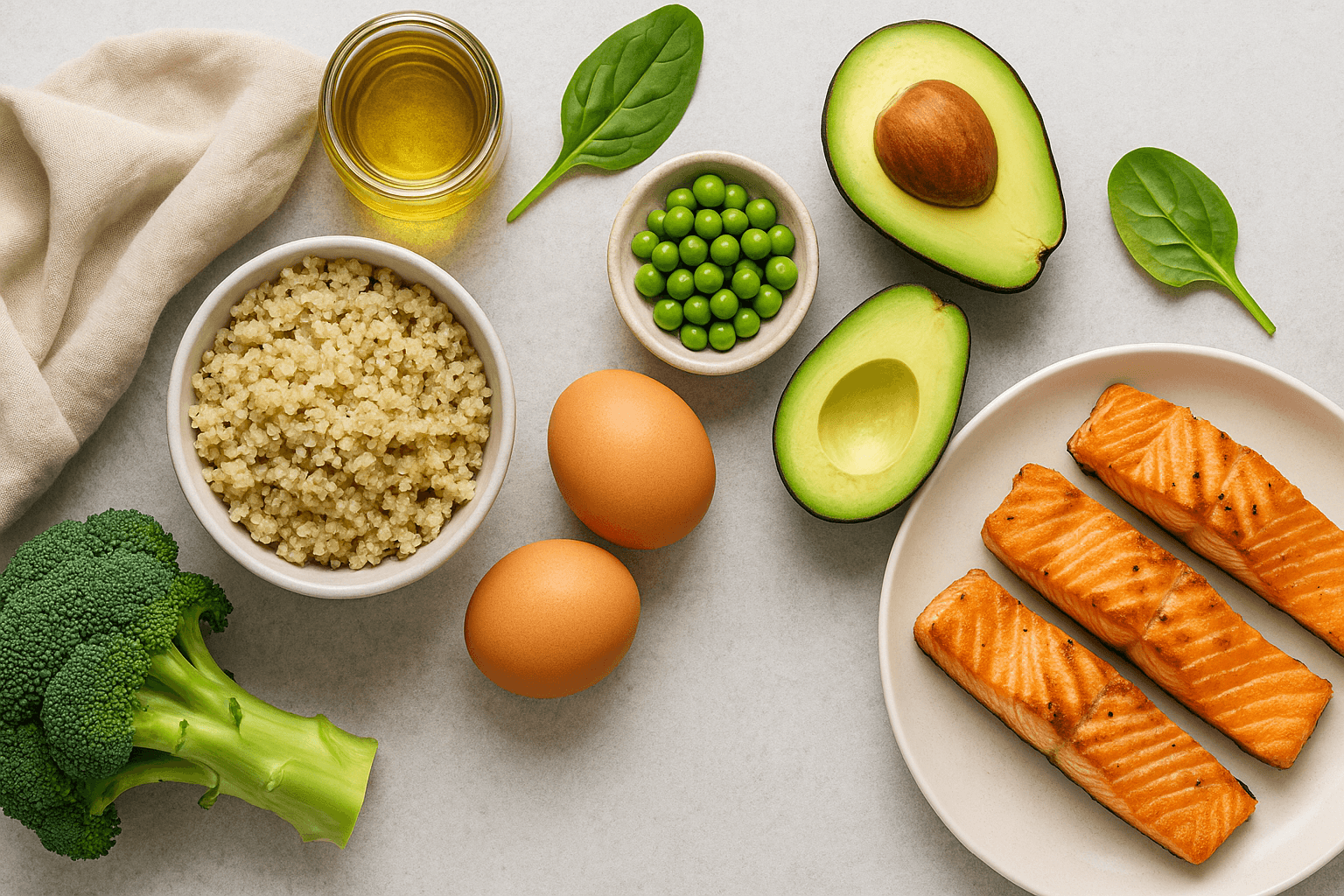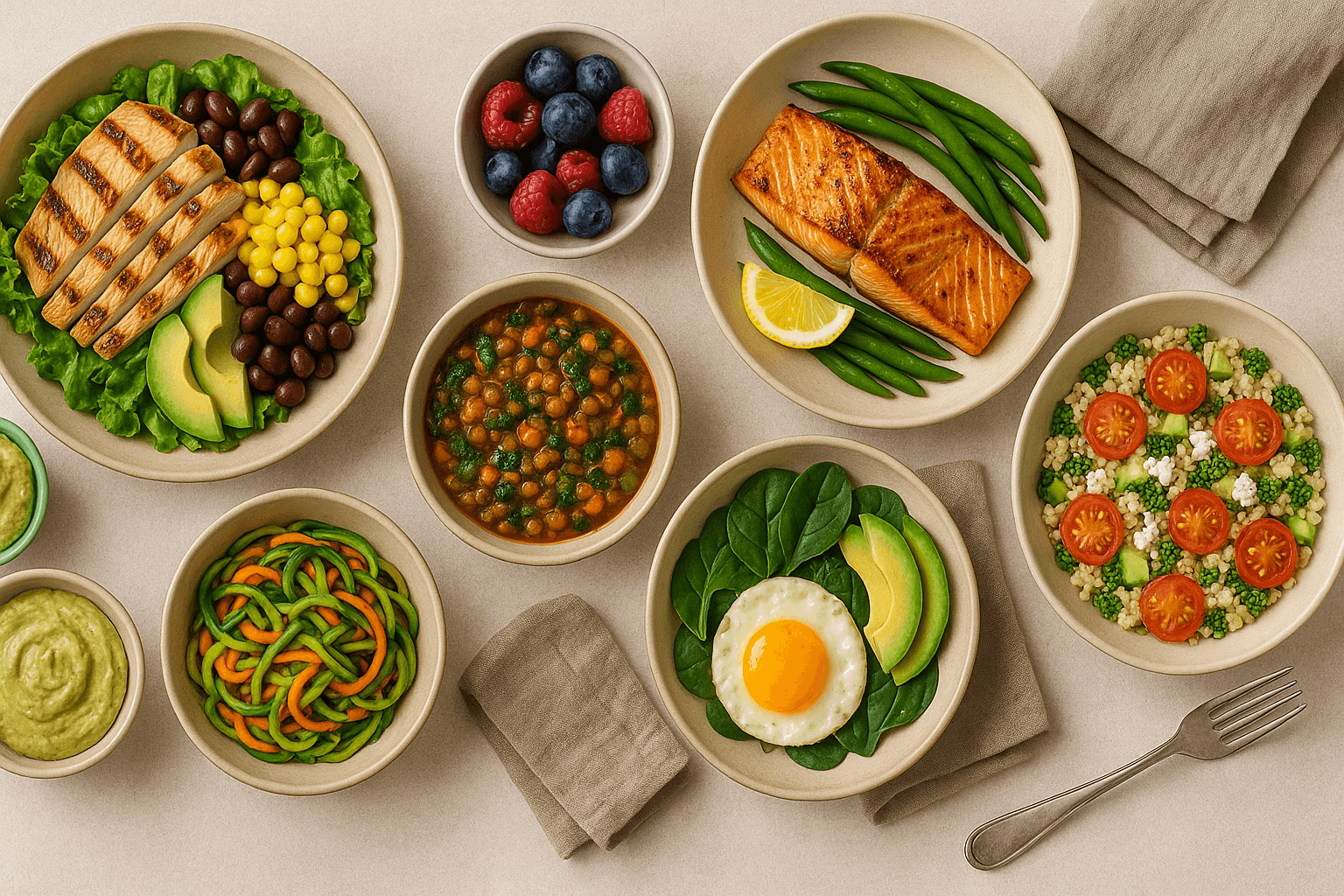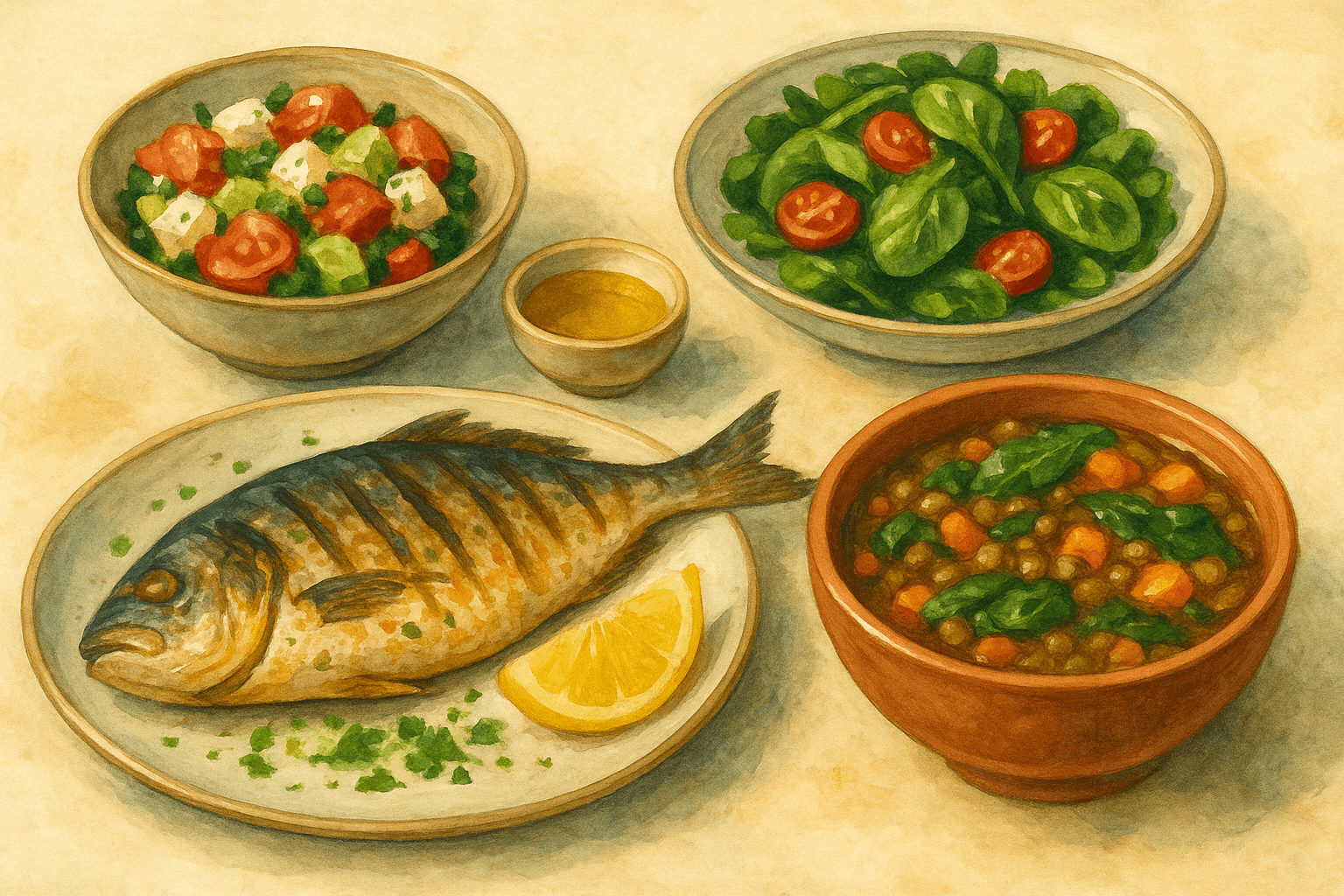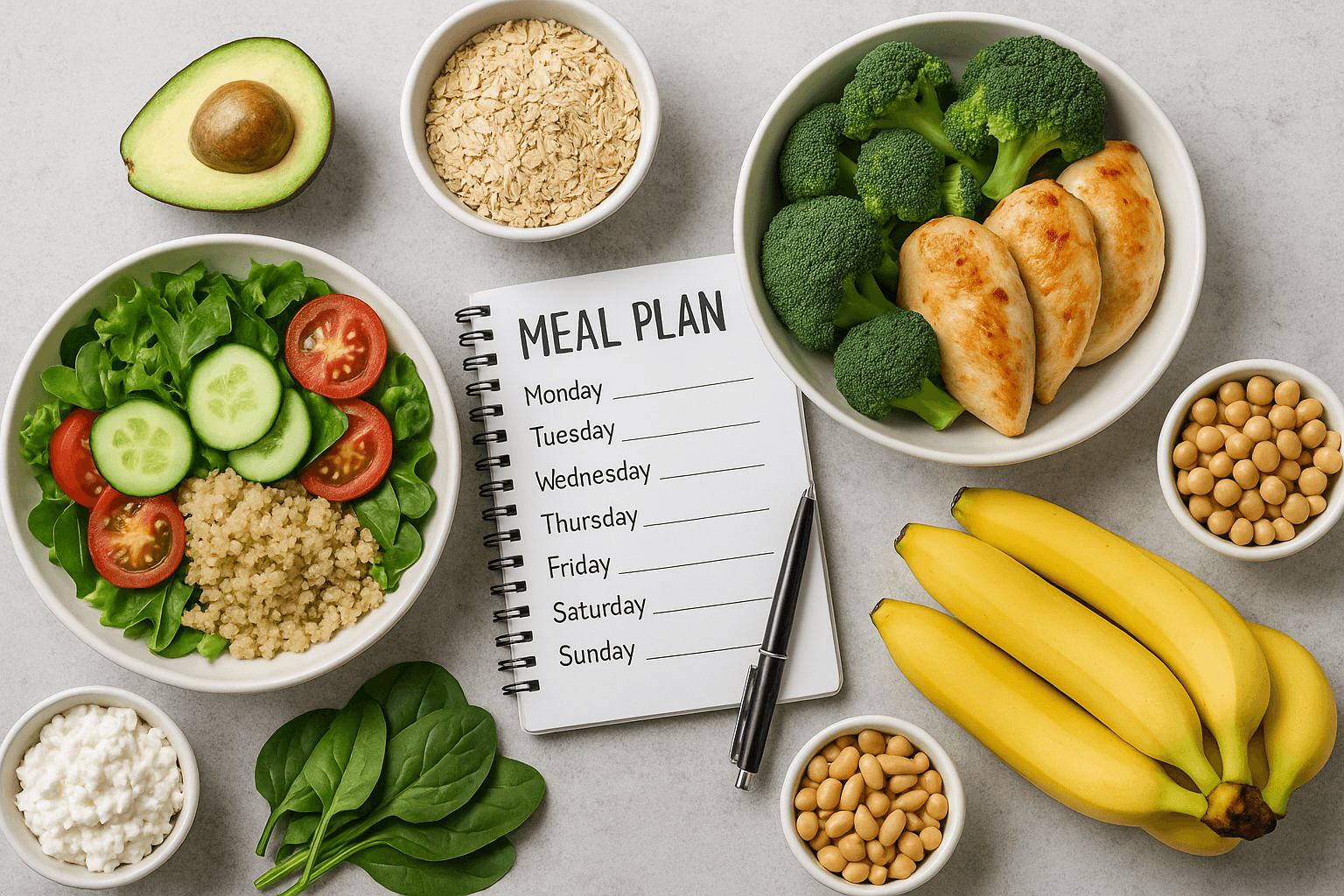Meal Planning for Beginners: Simple Strategies for Stress-Free Healthy Eating
Published on May 29, 2025

Let’s be real: eating healthy can feel overwhelming. Between busy schedules, family needs, and decision fatigue, it’s easy to default to takeout or whatever’s in a wrapper. But healthy eating doesn’t need to be complex—it just needs structure.
That’s where meal planning comes in.
Meal planning isn’t about perfection. It’s about rhythm—creating routines that support your energy and free your brain to focus on bigger things. This beginner’s guide will help you get started with real-life strategies that don’t require hours in the kitchen or culinary expertise.
Why Meal Planning Matters People who consistently eat well don’t rely on willpower—they rely on systems.
Meal planning gives you:
Routine (no more “what’s for dinner?” panic)
Better blood sugar and energy (fewer crashes, more focus)
Budget savings (less waste)
Less stress and decision fatigue
Even a loose plan makes better choices easier.
Step 1: Choose Your Planning Style Pick a format that fits your brain and lifestyle. There’s no one-size-fits-all.
Popular formats:
Theme nights: Meatless Monday, Taco Tuesday, Soup Sunday
Batch prep: Cook a lot on Sunday, eat all week
2-week rotation: Repeat the same meals bi-weekly
Daily staples: Same breakfast and lunch, rotate dinner
Keep it simple—elegance kills consistency.
Step 2: Create a Go-To Meal Matrix The best plans are built on flexible structures, not rigid recipes.
Meal formulas:
Grain bowl = grain + protein + roasted veg + sauce
Soup & salad = hearty soup + leafy greens + crunch
Protein + veg + carb = salmon + broccoli + sweet potato
Wrap = whole grain wrap + hummus + veggies + greens
Write down 6–8 meals you already know and rotate them.
Step 3: Stock the Staples Meal planning is easy when your kitchen is stocked with essentials.
Fridge: Greens (washed), eggs, plain yogurt, cheese, lemons, prepped veg
Freezer: Broccoli, berries, edamame, veggie burgers, leftovers
Pantry: Beans, pasta, rice, nut butters, olive oil, spices
Proteins: Chicken, salmon, tofu, tempeh, lentils, canned tuna
These are building blocks for dozens of meals.
Step 4: Plan for Leftovers Leftovers aren’t a fallback—they’re a strategy.
Tips:
Double recipes that reheat well (soups, stews, casseroles)
Roast extra veggies to store in containers
Batch-cook grains for salads, bowls, stir-fries
Cook extra protein for wraps, bowls, tacos
Remix ideas:
Roast veg → frittata
Beans → tacos
Rice → soup thickener
Don’t reinvent—just reimagine.
Step 5: Make a Weekly Template Templates make decision-making easier and help you stay consistent.
Sample template:
Monday: Grain bowls
Tuesday: Stir-fry night
Wednesday: Soup & salad
Thursday: Sheet pan dinner
Friday: Pasta + greens
Saturday: Wraps or tacos
Sunday: Batch cooking + freezer meals
Templates are tools, not rules. Adjust as needed.
Step 6: Plan for Your Real Life Meal plans fail when they’re made for fantasy lives. Plan for your week.
Ask:
Which nights are busy?
When will I get home late?
What’s already in my pantry or fridge?
Do I need packed lunches?
Adjust:
Quick dinners = eggs + toast + frozen veg
Use the slow cooker on busy days
Eat leftovers for lunch instead of cooking again
A flexible plan is a successful one.
Step 7: Involve the Household Don’t do it alone—meal planning works better as a team effort.
Try:
Letting kids choose one meal per week
Creating a family menu board
Taking turns on setting the table or prepping lunches
Shared planning = shared success.
Step 8: Use Tools That Work for You No need for spreadsheets (unless that’s your thing). Use tools that fit how you think.
Options:
Whiteboard on the fridge
Apps like AnyList, Paprika, or Google Keep
Notes app with saved templates
Dry-erase calendar or physical planner
The best tool is the one you’ll actually use.
Step 9: Make It Fun Meals should bring joy—not just nutrients.
Add joy by:
Trying one new recipe each week
Recreating your favorite restaurant dish
Hosting themed dinner nights (e.g., Mediterranean Thursday)
Making something indulgent but nourishing (banana oat muffins, anyone?)
If you look forward to meals, you’ll stick with your plan.
Step 10: Reflect and Improve Not every week will be perfect. That’s part of the process.
Ask:
What worked well?
Where did I struggle?
Did I plan too much or too little?
Were meals too repetitive or complicated?
Use your reflections to adjust next week’s plan. Flexibility = mastery.
Step 11: Have a Backup List Life happens. Always keep a few emergency meals in mind.
Quick go-to ideas:
Scrambled eggs + toast + cherry tomatoes
Tuna salad wrap + baby carrots
Frozen stir-fry mix + rice + tamari
Chickpeas + lemon + olive oil + herbs = instant salad
Keep ingredients on hand so you always have a Plan B.
Step 12: Rotate and Refresh Eating the same meals every day saves time—until it gets boring.
Ways to refresh:
Change the protein (chicken → salmon)
Change the sauce (pesto → tahini → chimichurri)
Use seasonal produce
Try new sides or spice rubs
Repetition is great. Boredom isn’t. Do less—but make it fun.
Final Thoughts: Progress, Not Perfection Meal planning isn’t about winning or being flawless. It’s a tool—one that should flex with your real life.
Start small. Build systems. Expect real life to happen.
The more your plan reflects you, the more sustainable it becomes. And the more consistent you are, the brighter and steadier your health landscape grows.
You’re not behind. You’re building. Let it be steady. Let it be yours.



